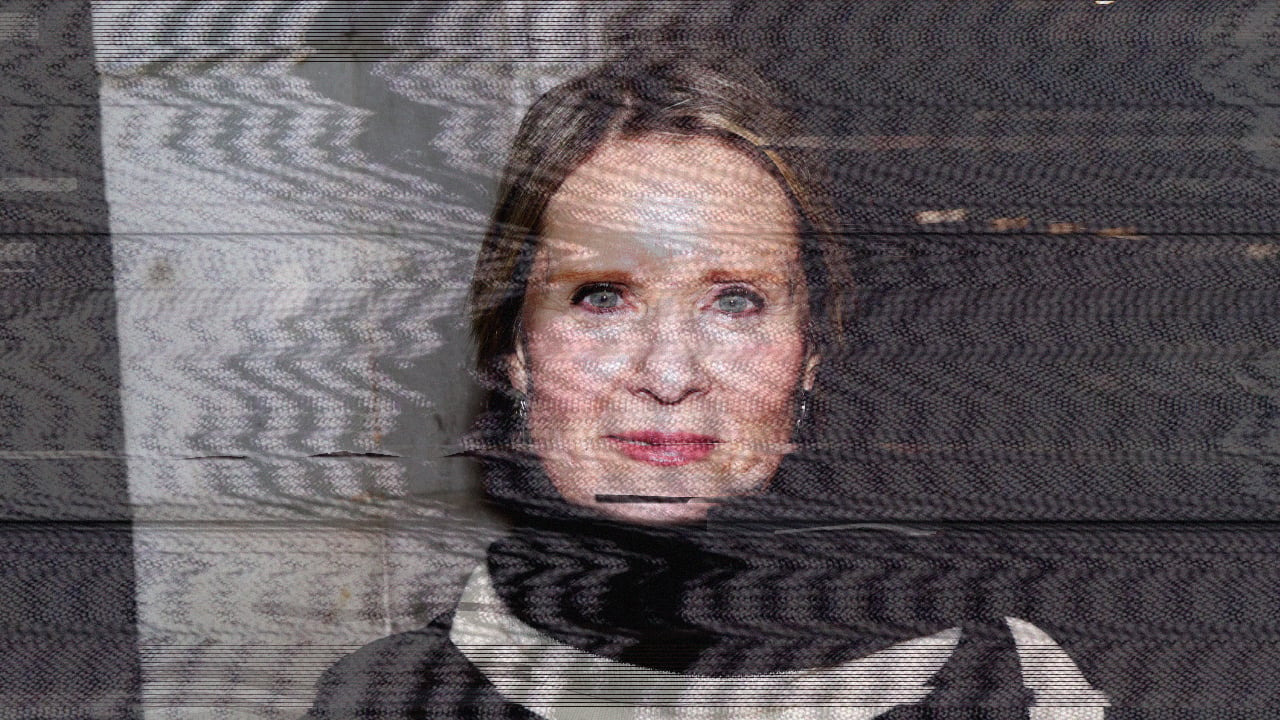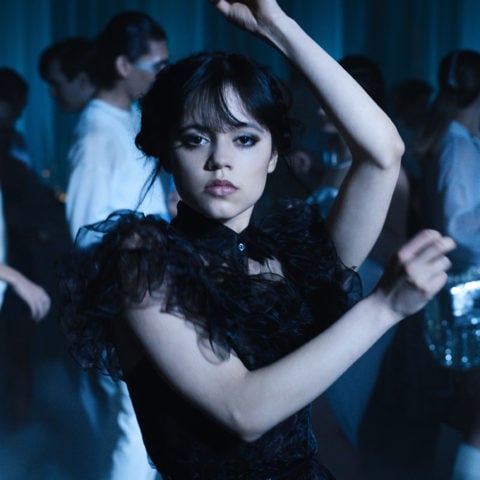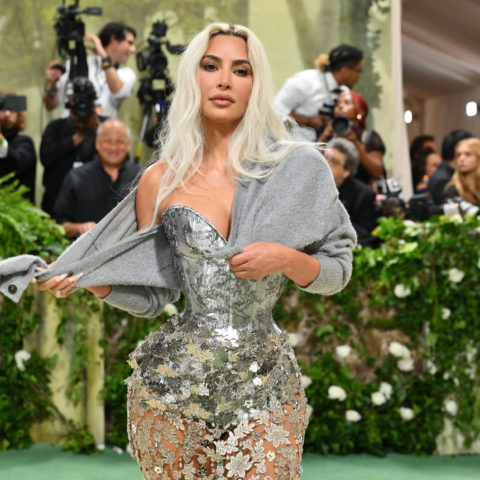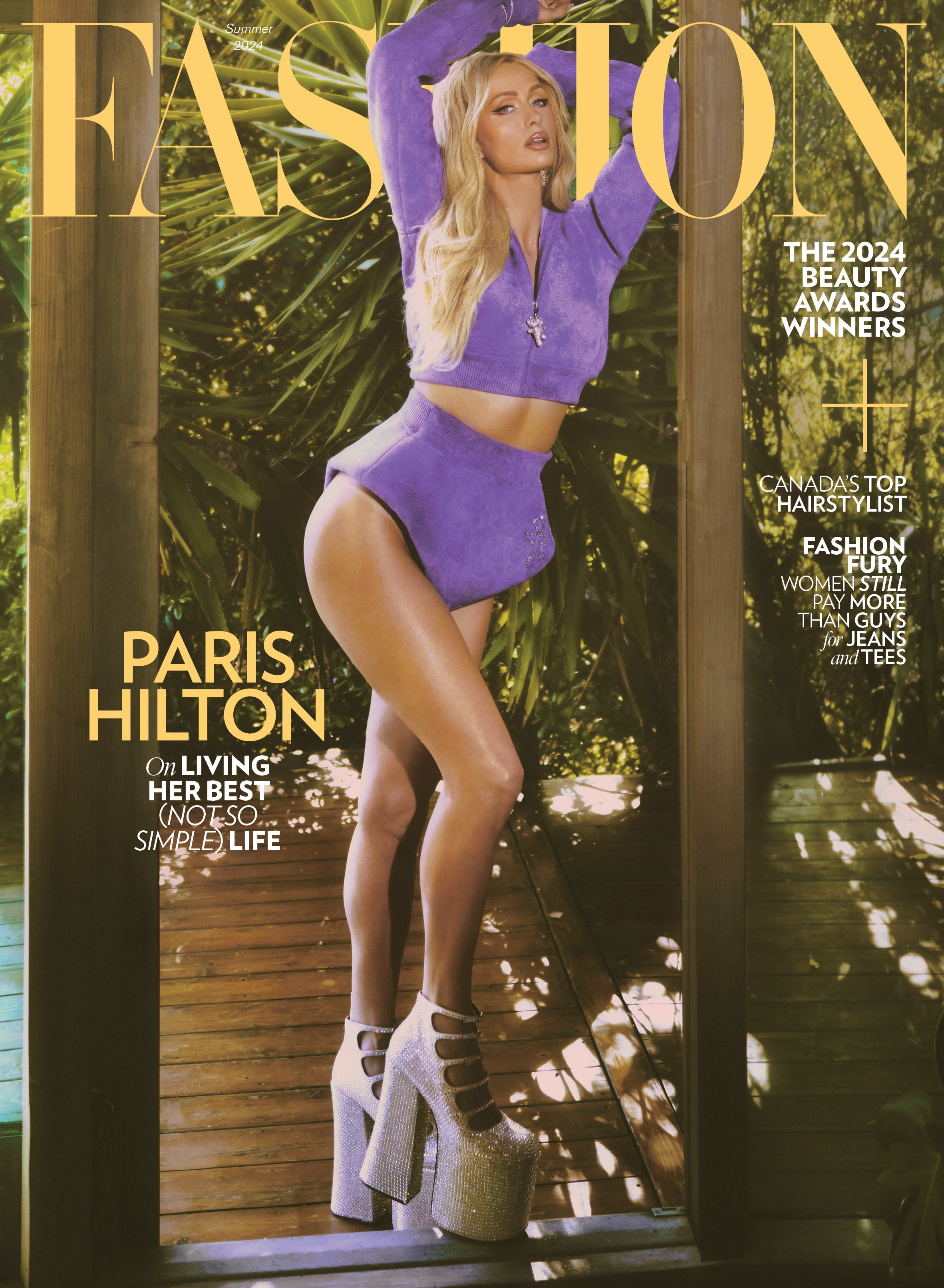This Video Seems Empowering, But It’s Kind of Problematic
For starters, it only shows *one* kind of femininity


On February 24, Harvey Weinstein was found guilty on two charges in his sexual assault case. It was and is a victory for women and sexual assault survivors of any gender everywhere—with the verdict indicating that people who report can and should be believed. It was a big day for female empowerment, so it only makes sense that everyone would want to ride the wave and keep the message going; which is what Girls Girls Girls magazine did. On the same day as the Weinstein verdict, the online mag released a video on its website and social media platforms. The video—which clocks in at just under three minutes—features actor, former New York gubernatorial candidate and our forever SATC fave Cynthia Nixon stoically reciting a version of “Be A Lady They Said,” a 2017 blog post by writer Camille Rainville.
“Be a lady they said. Your skirt is too short. Your shirt is too low. Your pants are too tight. Don’t show so much skin,” Nixon recites as images of stylized models in under boob-baring tops, being laced up in corsets, snapping cucumbers in half and sucking on popsicles flash on the screen, interspersed with clips from films like My Fair Lady and the now infamous video of Pope Francis swatting away a woman’s hand.
https://www.instagram.com/p/B843JEzg2Q7/?hl=en
The poem is meant to call attention to the double standards that women face; having to be simultaneously the Madonna and the whore in pretty much every aspect of their lives—which, as we know, sets us all up for failure and constant criticism. The video—most likely because of its timely and resonant messaging (plus, Nixon)—quickly went viral, being viewed over four million times.
But the truth is that, no matter how much we may think the video and its messaging are empowering on a click-and-share surface level, it leaves a heck of a lot to be desired.
First of all, the images aren’t that empowering
Having Nixon recite Rainville’s words was a great casting choice: She is a staunch supporter of women’s rights and ran for Governor of New York in 2018 on a platform that protected reproductive freedom and saw menstrual equity as gender equity. When she ran against Andrew Cuomo, Nixon was heralded as a refreshing alternative to the status quo. But the other visuals don’t really jive with Rainville’s undoubtedly powerful words. First of all, if we’re talking about empowering women—what about empowering all women? There are next to no women of colour in the video, aside from very quick flashes of Girls Girls Girls cover stars Tracee Ellis Ross and Vanessa Hudgens, and maybe like two Black models, and there is absolutely no body or ability diversity in the entire vid.
At first I wondered if this was an intentional reinforcement of the impossible standards that the poem rails against. But a quick view of the Girls Girls Girls Instagram page reveals this is the very imagery they share, unironically, on the regular. (Also, just me, or does their Insta tagline, “Bringing Back the Woman” sound really TERF-y?) It’s like taking a step back in time and opening the pages of a ’90s fashion mag. But this is 2020 and race, body and ability diversity in media is the *bare* minimum, and especially should be in a video that’s attempting to break down the idea that women have to fit into a certain body type. Nixon reciting, “Don’t be too fat…Don’t be too large…Slim down. Stop eating so much…You have to fit into those jeans,” sounds a lot like a directive when it’s said over images of only Kate Moss-esque bodies. Honestly, where is 13 Going On 30‘s Jenna Rink and her new and improved Poise magazine when you need it!
Also, aside from some quick flashes of pop culture moments and references, the images in the video are actually pretty confusing. Quick Q: What does a woman with perfectly manicured nails, snapping a cucumber in half or holding a stiletto to her temple have to do with tumbling the patriarchy? It’s pretty obvious that the majority of the images used in the video come from the magazine itself—or are at least inspired by high fashion mags. Honestly, I was too busy trying to decipher what the heck was going on to even pay attention to the message on my first view. And I’m not alone: As Impakter magazine points out in a February 26 article, the heavily editorialized and sexualized images take the focus away from the words in the video.
In fact, in response to the video by Girls Girls Girls, Rainville chose to have her work re-published on impakter.com. Writing about Rainville’s decision—and the Girls Girls Girls video—the editorial board for the mag said that the images in the video were “deliberately placed to generate scandal rather than opening a constructive dialogue.”
“We feel that this video is instrumentalizing Camille’s wonderful words and it only achieves a divisive reaction,” the note continued. “Not in line with the vision of an inclusive world we feel this piece is aimed at.” The editorial note concludes by urging readers and viewers to focus on Rainville’s words—which I have to agree with.
The video was directed by a man
This mixing of messages could be in large part due to who was behind the camera: specifically, a man. *eye roll*
The short film was directed by Paul McLean, a photographer and videographer who is no doubt very talented, but also really has no business directing a film like this. It’s probably a coincidence that the Girls Girls Girls video was released the same week as Taylor Swift’s “The Man” music video; but it’s a coincidence that only serves to further highlight the issues with the former. Swift’s song “The Man” has super similar vibes to Rainville’s poem—in that both call out the double and impossible standards women are held to. But whereas Rainville’s words were illustrated through the the male gaze, Swift made a very conscious point to own, write and direct the video for “The Man” herself. How cool would it have been to have Girls Girls Girls follow suit and have a woman direct the video? Something tells me it would have made the message a little more impactful.
The whole thing just feels like an ad for the magazine
Something else that might have made the video more impactful? If the magazine had acknowledged that fashion mags have historically (and some continue to) perpetuated *a lot* of the double standards that Rainville’s message is calling out.
While tons of magazines as of late *have* made the commitment to become more inclusive (including FLARE—and, listen, we know we’re not perfect but we are committed to doing better every.damn.day.)—highlighting diversity of bodies, races, abilities and experiences, it’s no secret that these mags have typically pushed a lot of the negative narratives Rainville seeks to smash, either through the images and models they use in shoots, the stories they publish or the ads they run. These narratives range from the idea that women have to be hairless to the notion that they have to be both sexually satisfying and not too slutty—all while wearing a size 0.
This hypocrisy comes across in the video thanks in part to the aforementioned images used—which continue to feature perfectly manicured models. Even the could-be powerful image of a woman with her hands around her throat, mouth caught mid-scream (clearly symbolic of women being silenced), loses a bit of its oomph when you notice her perfectly glossed, ruby red lips. On its own, of course, makeup isn’t the issue—wear what you damn want—but in this context it serves as a reminder that this entire vid is just one big ‘ol advertisement for the magazine and its editorial vision. Think about it: Had you heard of Girls Girls Girls prior to this? Mission accomplished.
After watching the video, I was left with this sinking feeling that it is just capitalizing Rainville’s words—instead of leaning in to them. And every time I’ve seen it shared I’ve felt sad that these are the images that are going viral.









